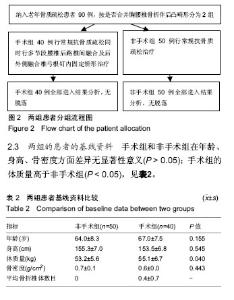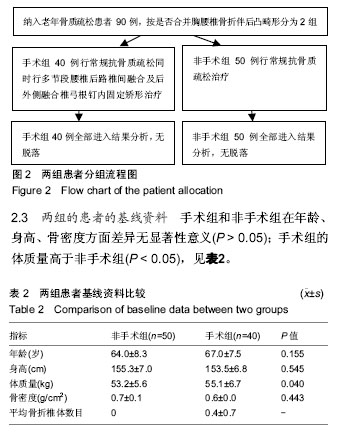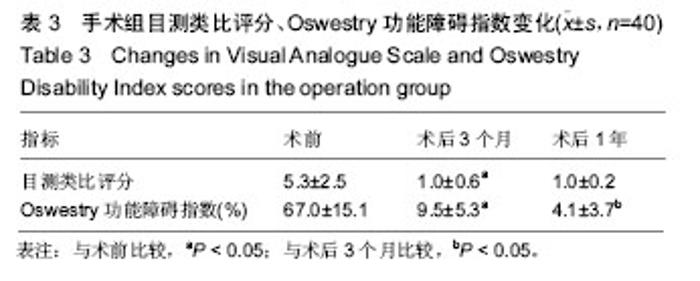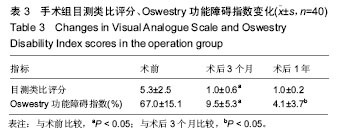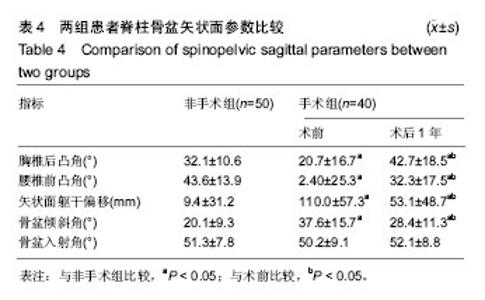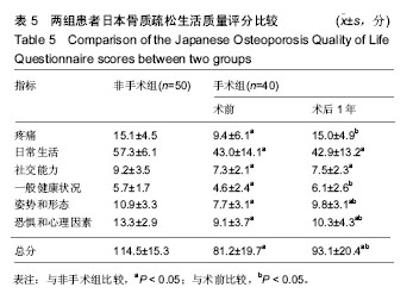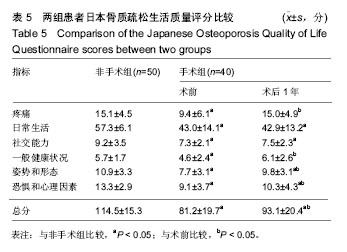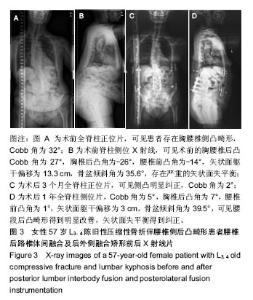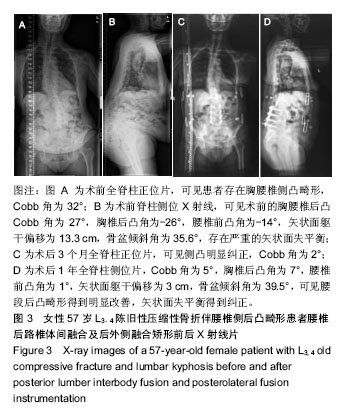| [1] Wei Y, Tian W, Zhang GL, et al. Thoracolumbar kyphosis is associated with compressive vertebral fracture in postmenopausal women. Osteoporos Int. 2017;28(6): 1925-1929.[2] 王琨,杨操,杨述华,等. 陈旧性胸腰椎骨折伴后凸畸形的截骨矫形术式选择[J]. 中国脊柱脊髓杂志,2016,26(1):24-29.[3] Endo N. Which questionnaire is suitable for the QOL evaluation of osteoporotic patiemts? JOQOL is osteoporosis-targeted. Clin Calcium. 2012; 22(2): 254-258.[4] 罗文正,唐廷波,陈诚. 老年骨质疏松性脊柱骨折的临床特点与治疗方法选择[J]. 中国骨质疏松杂志,2012,18(7): 647-649.[5] 邓红平,陈其昕,胡灏,等. 经椎弓根椎体内植骨治疗老年骨质疏松性脊柱骨折的疗效分析[J]. 中国老年学杂志,2013,33(14): 3322-3324.[6] Barrey C, Roussouly P, Perrin G, et al. Sagittal balance disorders in severe degenerative spine. Can we identify the compensatory mechanisms? Eur Spine J. 2011;20 Suppl 5: 626-633.[7] Chen P, Miller PD, Binkley NC, et al. Use of lowest single lumbar spine vertebra bone mineral density T-score and other T-score approaches for diagnosing osteoporosis and relationships with vertebral fracture status. J Clin Densitom. 2008;11(4): 525-531.[8] Abdel-Hamid OA, Bassiouni H, Koutri R, et al. Aging of the thoracic spine: distinction between wedging in osteoarthritis and fracture in osteoporosis--a cross-sectional and longitudinal study. Bone. 1994;15(4): 437-442.[9] Mika A, Unnithan VB, Mika P. Differences in thoracic kyphosis and in back muscle strength in women with bone loss due to osteoporosis. Spine (Phila Pa 1976). 2005;30(2): 241-246.[10] Buchowski JM, Kuhns CA, Bridwell KH, et al. Surgical management of posttraumatic thoracolumbar kyphosis. Spine J. 2008; 8(4): 666-677.[11] Bautmans I, Van Arken J, Van Mackelenberg M, et al. Rehabilitation using manual mobilization for thoracic kyphosis in elderly postmenopausal patients with osteoporosis. J Rehabil Med. 2010; 42(2): 129-135.[12] Greig AM, Bennell KL, Briggs AM, et al. Balance impairment is related to vertebral fracture rather than thoracic kyphosis in individuals with osteoporosis. Osteoporos Int. 2007;18(4): 543-551.[13] Sinaki M. Yoga spinal flexion positions and vertebral compression fracture in osteopenia or osteoporosis of spine: case series. Pain Pract. 2013;13(1): 68-75.[14] Wakao N, Takeuchi M, Kamiya M, et al. The surgical treatment method for an adult posttraumatic thoracolumbar kyphosis patient with osteogenesis imperfecta. Nagoya J Med Sci. 2014;76(3-4): 341-348.[15] Dorward IG, Lenke LG. Osteotomies in the posterior-only treatment of complex adult spinal deformity: a comparative review. Neurosurg Focus. 2010;28(3): E4.[16] Heggeness MH. Spine fracture with neurological deficit in osteoporosis. Osteoporos Int. 1993; 3(4): 215-221.[17] Gokcay CA, Sain GG. Fracture of vertebral spine because of an unusual cause of osteoporosis in a young male patient. J Clin Densitom. 2012; 15(2): 255-256.[18] Hansen-Algenstaedt N, Liem M, Holz J, et al. Posterior only approach to open wedge osteotomy in the thoracolumbar spine. Eur Spine J. 2017.[19] Sadatsune DA, Costa PP, Caffaro MF, et al. Thoracolumbar burst fracture: correlation between kyphosis and function after surgical treatment. Rev Bras Ortop. 2012;47(4): 474-478.[20] 张国华,陈宗成,张顾议,等. 退变性腰椎侧后凸畸形的手术治疗[J]. 中国脊柱脊髓杂志,2007,17(7): 489-493.[21] Harrison RA, Siminoski K, Vethanayagam D, et al. Osteoporosis-related kyphosis and impairments in pulmonary function: a systematic review. J Bone Miner Res. 2007;22(3): 447-457.[22] Hu X, Lieberman IH. Proximal instrumented vertebral body chance fracture after pedicle screw instrumentation in a thoracic kyphosis patient with osteoporosis. J Spinal Disord Tech. 2015;28(1): 31-36. |
